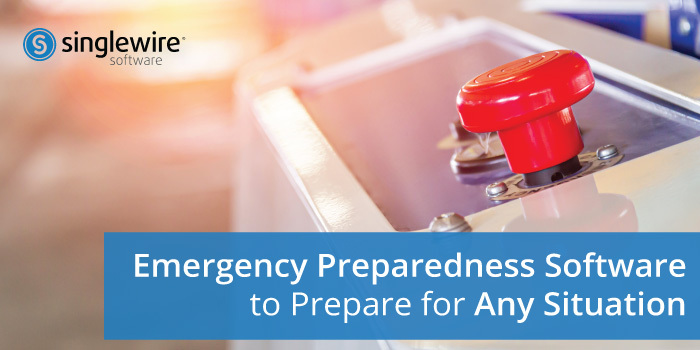Emergency Preparedness Software for Any Circumstance
Organizations across various industries face a multitude of potential emergencies that can disrupt operations, endanger lives, and incur significant financial losses if not handled swiftly and efficiently. From natural disasters like earthquakes and hurricanes to human-made incidents such as cyberattacks and workplace accidents, the importance of being prepared for any eventuality cannot be overstated. Preparation comes from understanding the emergencies that can have the greatest impact and the tools an organization can put in place to minimize the effects. In this post, we will explore the crucial role emergency preparedness software can play in enhancing readiness for a wide range of situations, from identifying potential emergencies to effectively managing them in real-time.
Understanding the Cost of Being Unprepared
The consequences of being unprepared for emergencies can be staggering with regard to human safety and financial impact. Research from the Ponemon Institute indicates that downtime caused by emergencies can cost businesses thousands of dollars per minute, with some estimates suggesting that the average cost of downtime across all businesses is approximately $9,000 per minute. This does not even account for the psychological or physical toll employees may endure as a result of an incident. Furthermore, the aftermath of emergencies can lead to reputational damage, legal liabilities, and even the closure of businesses that fail to recover from the disruption.
Identifying Emergencies and Assessing Impact
To effectively prepare for emergencies, organizations must first identify the types of incidents they are most likely to encounter based on their industry, location, and specific risk factors. This process involves gathering key stakeholders from various departments, including IT, security, facilities, and human resources, to make a comprehensive assessment of potential threats and vulnerabilities.
Understanding how each type of emergency can impact operations and people’s safety is crucial for developing an effective emergency preparedness plan. Whether it is a natural disaster that disrupts operations or a violent intruder that threatens employees’ well-being, organizations must be proactive in anticipating and mitigating potential risks to minimize the impact on their operations and personnel.
The Role of Emergency Preparedness Software
Incident management systems play a pivotal role in helping organizations prepare for and respond to emergencies effectively. By providing a centralized platform for coordinating emergency response efforts, emergency preparedness software enables organizations to streamline communication, automate critical processes, and ensure a rapid and coordinated response to any incident.
One of the key features of emergency preparedness software is the ability to prebuild messages for various types of emergencies, ensuring that organizations can quickly disseminate critical information to employees, stakeholders, and relevant authorities when needed. These prebuilt messages can include instructions for evacuations, sheltering in place, reporting suspicious activities, and other essential actions to ensure the safety and well-being of everyone involved.
Moreover, emergency preparedness software allows organizations to create predefined steps for every stage of the emergency response process, from detecting the incident to providing follow-up updates and issuing the all-clear signal. By establishing clear protocols and procedures in advance, organizations can minimize confusion, reduce response times, and ensure a more efficient and effective response to emergencies.
Leveraging Existing Technology for Communication
In addition to facilitating communication within organizations, emergency preparedness software enables organizations to leverage existing technology to spread critical alerts and notifications to employees and stakeholders. Whether it is through text messages, audio announcements, or visual displays, organizations can use a variety of communication channels to ensure that emergency information reaches everyone quickly and effectively.
By integrating with existing communication systems and devices, emergency preparedness software enables organizations to reach employees wherever they are, whether they are in the office, working remotely, or on the go. This ensures that critical information can be disseminated promptly, allowing employees to take appropriate actions to protect themselves and others in the event of an emergency.
Emergency preparedness software is a vital tool for enhancing readiness and resilience in the face of any situation. By helping organizations identify potential emergencies, assess their impact, and develop effective response plans, emergency preparedness software empowers organizations to mitigate risks, protect lives, and safeguard their operations and assets. Leveraging existing technology and communication channels helps organizations ensure that critical information reaches employees quickly and efficiently, enabling a swift and coordinated response to emergencies when every second counts. Investing in emergency preparedness software is not just about protecting the bottom line – it is about protecting the people that make an organization run. For more information on emergency preparedness software, visit our emergency notification page.
